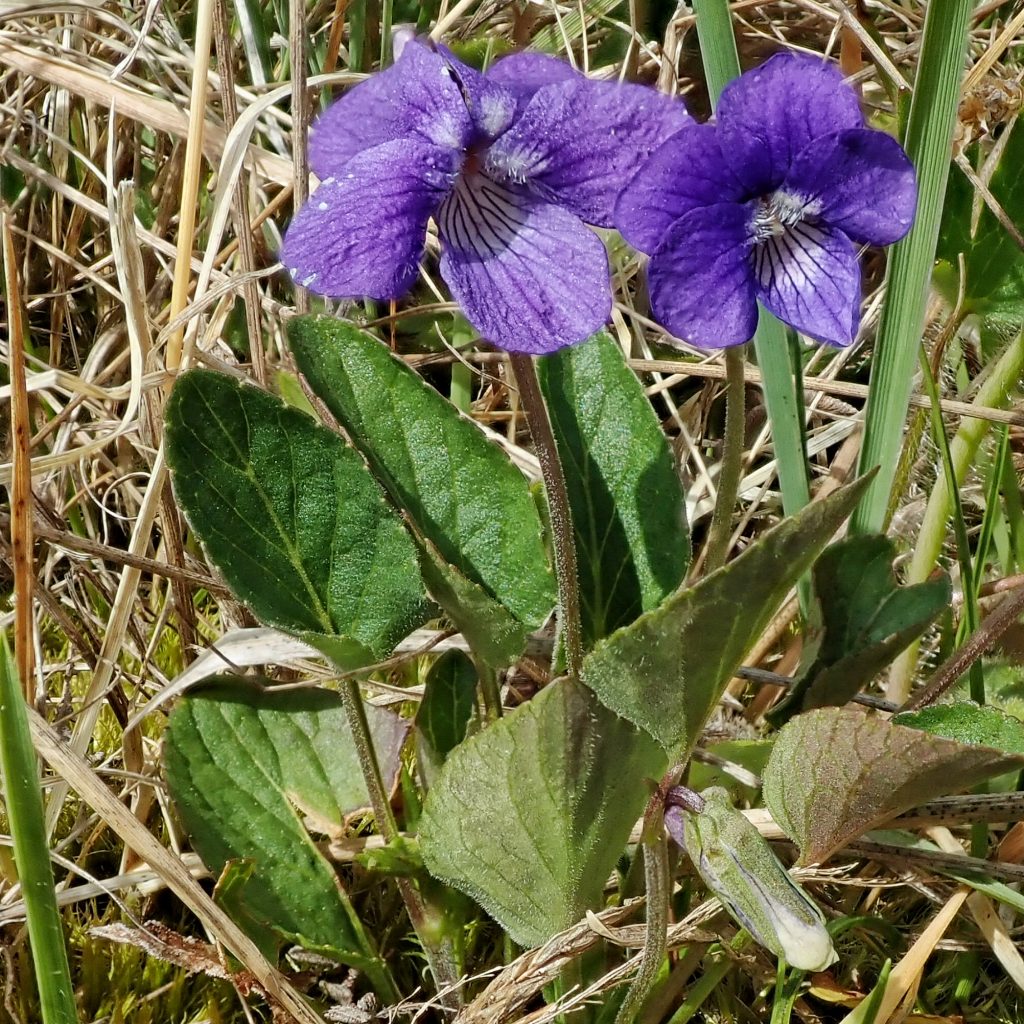
These beautiful little members of Violaceae have many common names, including sand violet, Cascades early blue violet, early blue violet, common periwinkle, large periwinkle, western dog violet, dog violet, and hookedspur violet, amongst many others. The abundance of common names suggests to me that every locale values them highly, and wants to make them their own.
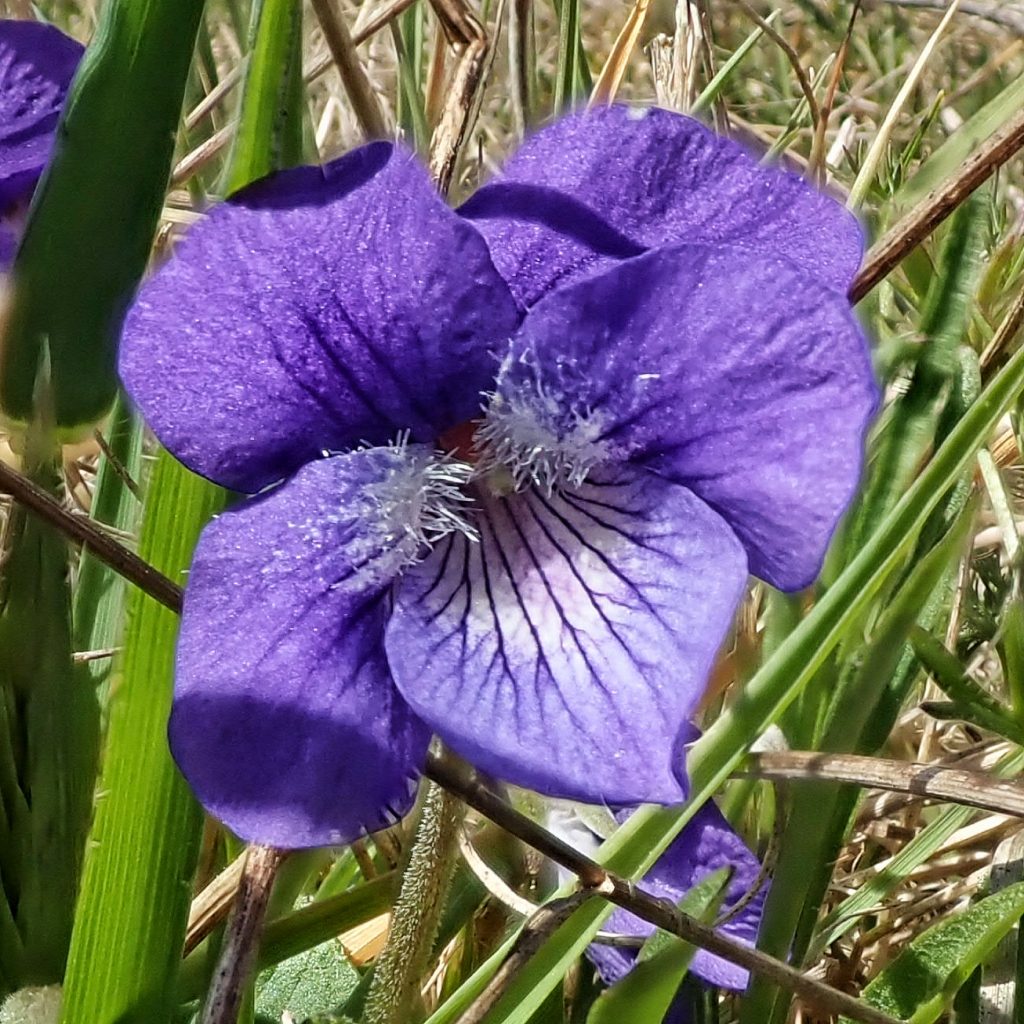
The species Viola adunca as a whole is holding its own in our region, because it has adapted to a wide variety of habitats. However, in some of those habitats it is in serious decline, primarily in the grasslands and prairies of the coastal headlands, Willamette Valley, and Puget Trough. Fragmentation and destruction of these habitats and encroachment by non-native forbs and grasses are the biggest reasons for these declines, the latter being due to the fact that Viola adunca is easily crowded out by tight thatching and ultra competitive plants.
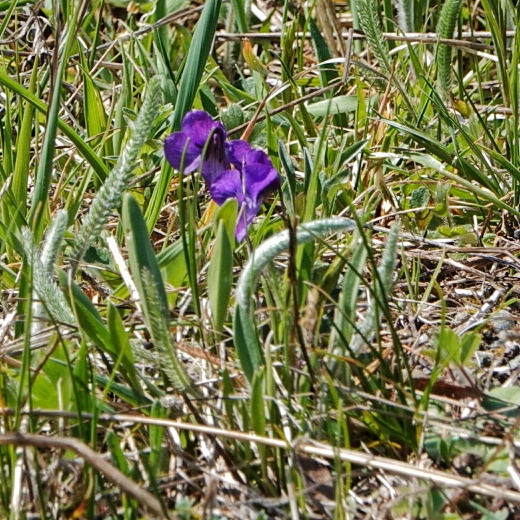
There are three butterfly denizens of these grasslands and prairies that are Federal Endangered Species. They are subspecies of Speyeria zerene and depend upon Viola adunca as a larval host; Myrtle’s silverspot (ssp. myrtleae), Behren’s silverspot (ssp. behrensii), and Oregon silverspot (ssp. hippolyta). Protection of these habitats, extensive planting of Viola adunca along with native nectar sources, and removal of invasive species, has led to a modest rebound in the numbers of these irreplaceable butterflies.
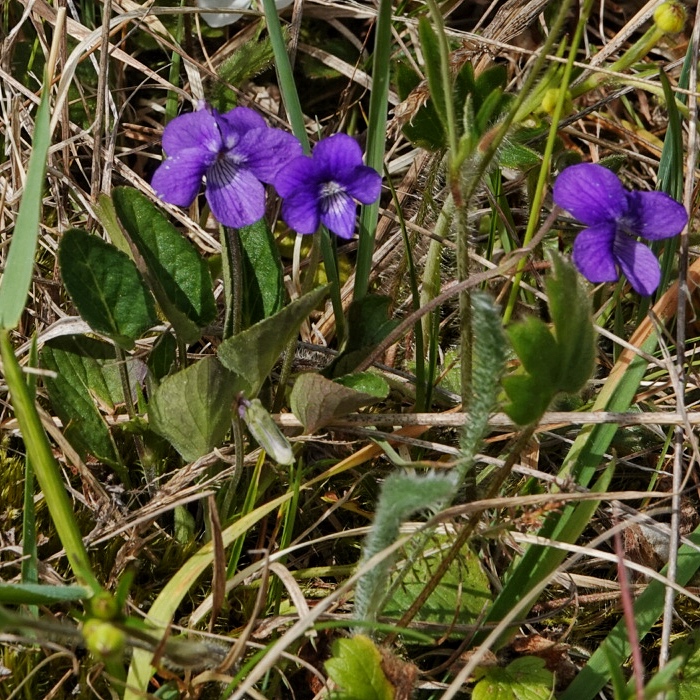
The seeds of this plant carry a nutritious fatty body (elaisome) to help utilize myrmecochory (ant dispersal) to spread its seeds, although the explosive bursting of the seed heads is a good start on the dispersal process. They often form closed, budlike, self fertilizing (cleistogamous) flowers, which have the advantage of being less of a drain on the plant’s resources, since neither nectar nor showy flowers need be produced. This is also apparently a hedge against a lack of pollinators or pollination partners, though it does limit genetic diversity.
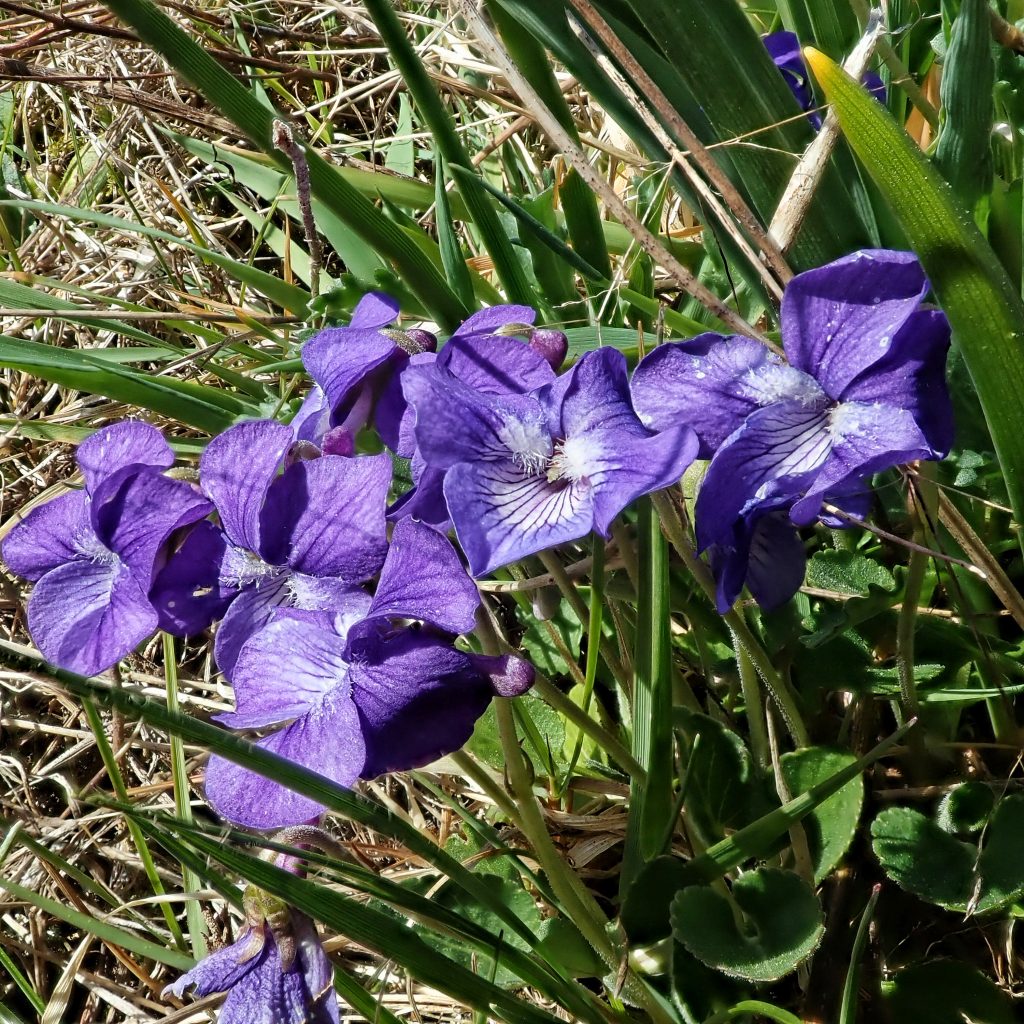
The flowers and leaves of Viola adunca are edible and are high in vitamins A and C, and have been used in salads and as potherbs. But the rhizomes and seeds are somewhat toxic to humans, though they have been used medicinally, usually topically for sore joints. The stems and leaves have been used by women in labor, to treat asthma and other lung ailments, and to relieve constipation. The Blackfoot tribe used it to dye their arrows blue.
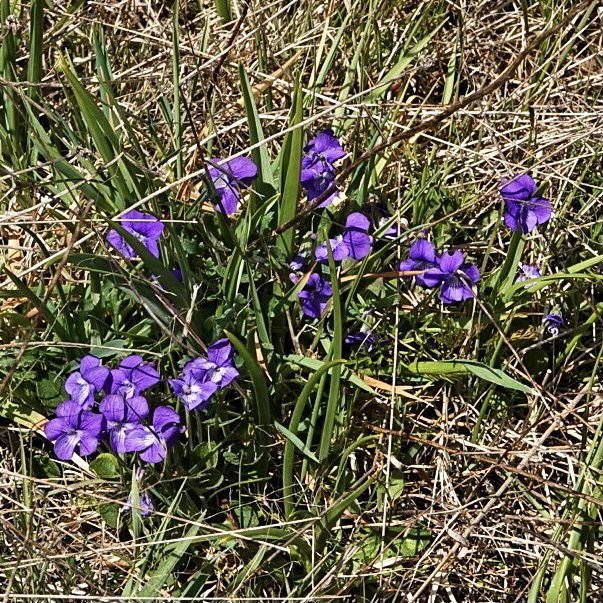
Description– Perennial with rhizomes but no stolons; small plants (usually under 5” tall), with branching stems; has both basal and stem leaves; leaves heart shaped to broadly lanceolate, hairy, square toothed to smooth margined, often ± the size of the flowers; flower scapes arising from the rhizome, leafless, but with small stipules; flowers small, blue to violet with veined white throat (these veins are UV reflective and act as nectar guides); lowest petal with 3-10mm spur; outer petals with hook shaped spurs, and white beards in the throat; ovary and seeds hairless.
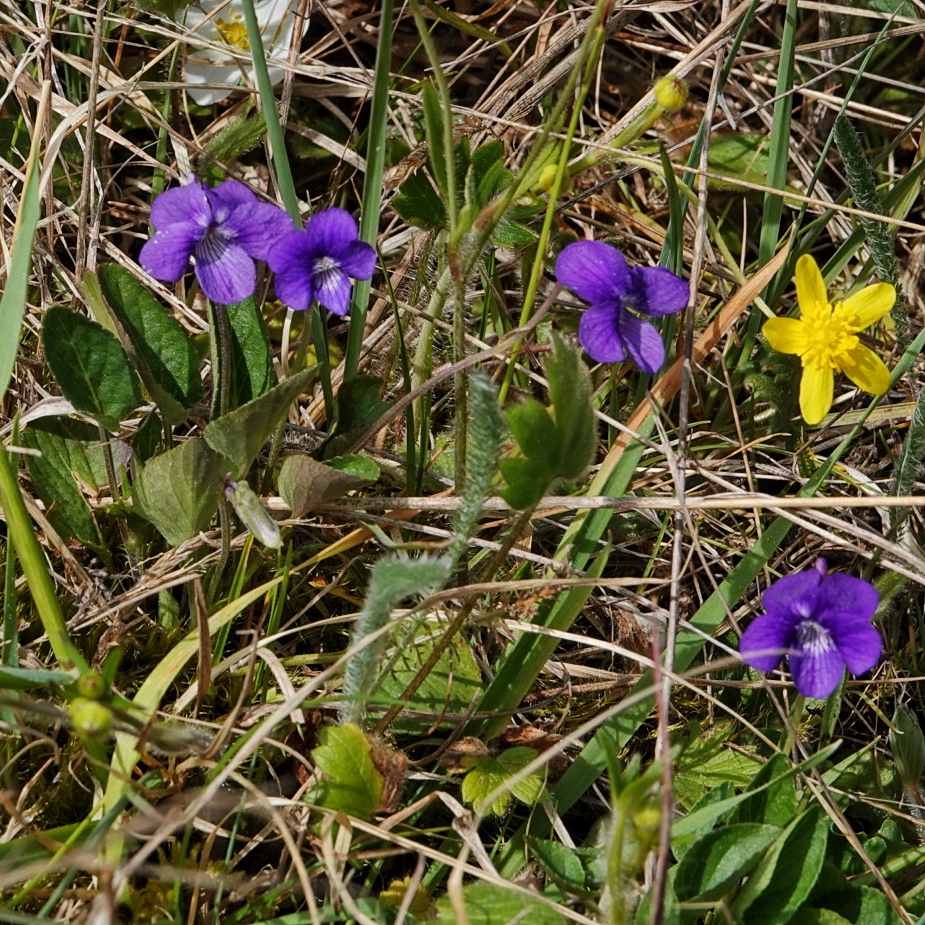
Similar species–V. odorata, palustris, riviniana all have stolons; V. odorata has hairy ovary and nutlets; V. howellii, langsdorffii both have leafy stems bearing the flowers.
Habitat-Moist to arid grasslands, prairies, meadows, open forest and forest openings, up to 7,000’ elevation.
Range-North America; found region wide in appropriate habitat.
Reproductive timing-Blooms April to August, depending on elevation
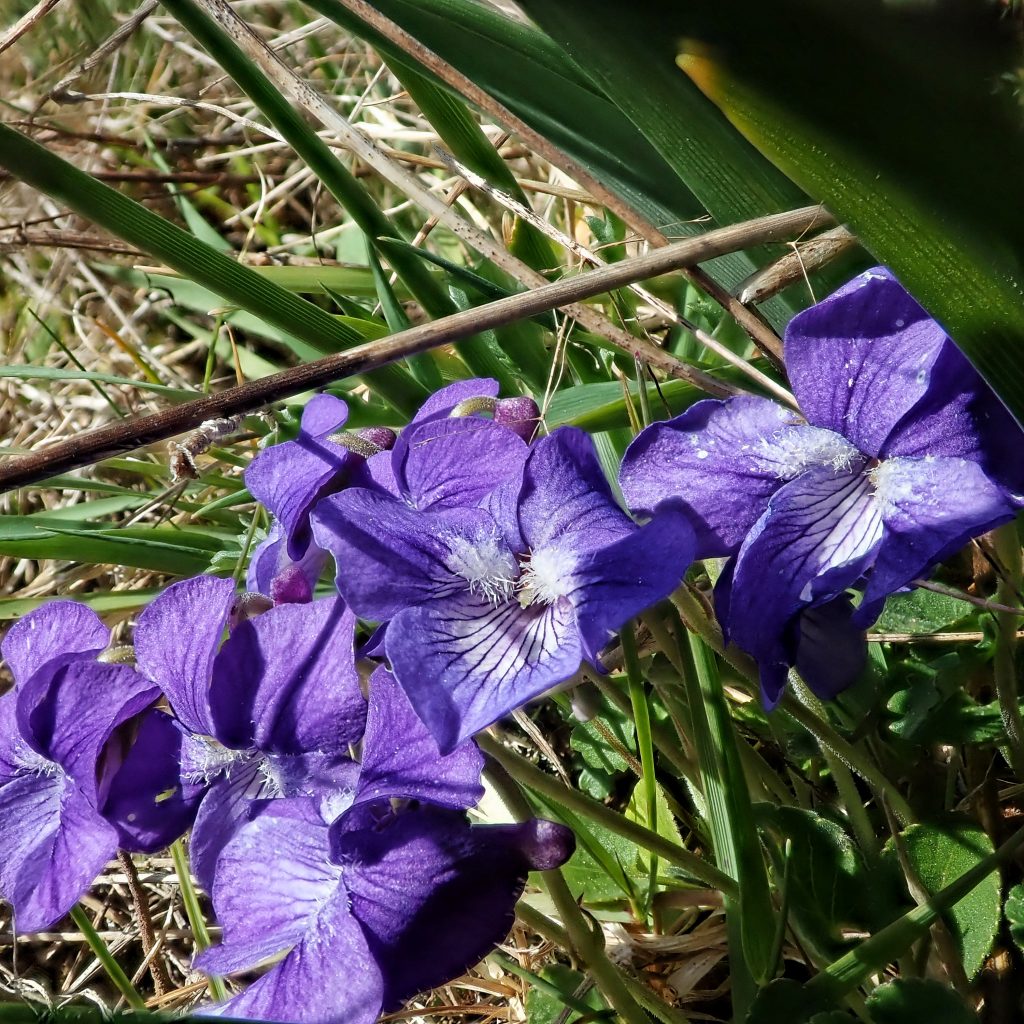
Eaten by– Considered to be a primary nectar source for the butterfly Polites mardon (Mardon Skipper), an Endangered Species endemic to the PNW; a vast array of bees, wasps, beetles, true bugs, flies, and other invertebrates rely on its early season nectar and pollen; several Speyeria spp. butterflies, including hydaspe, mormonia, callippe, and zerene use it as a larval host, as does Boloria epithore; moths which use this as a larval host include Xestia c-nigrum, Udea profundalis, and Lacanobia subjuncta, amongst many others; deer and rabbits browse the foliage, and Mourning Doves and grouse eat the seeds.
Etymology of names–Viola is the Latin word for violets. The specific epithet adunca is Latin for hooked, referring to the hooked spur.
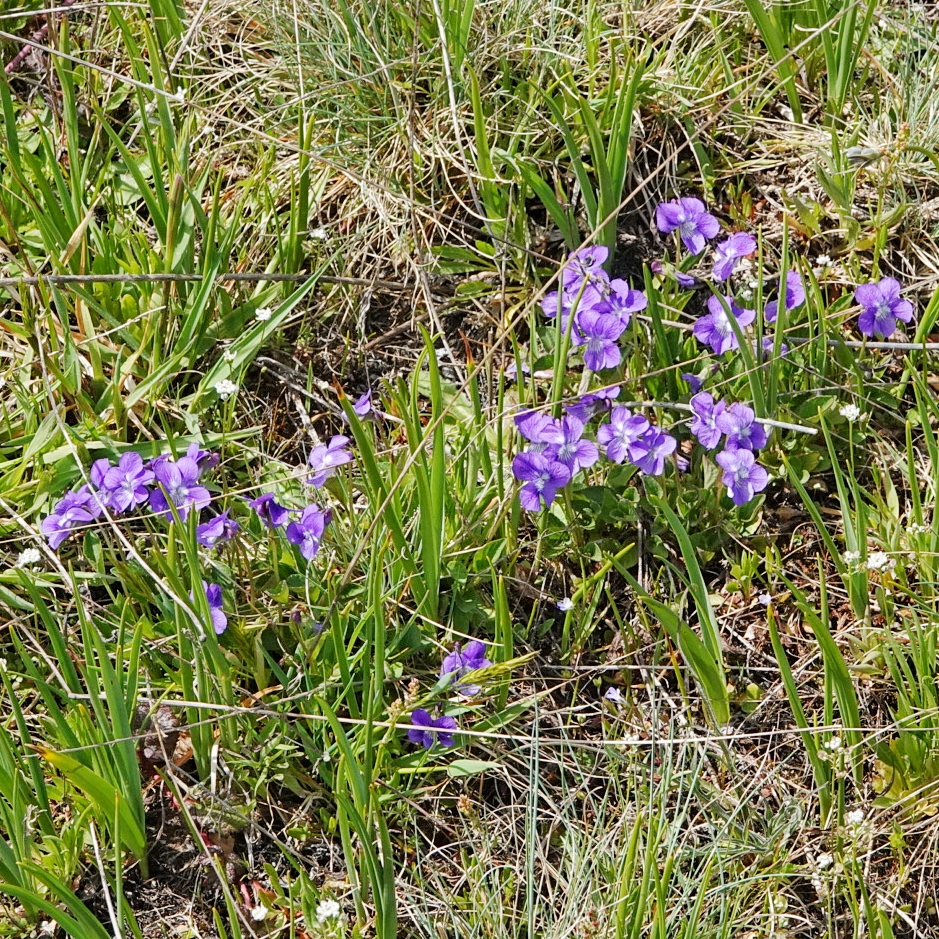
https://linnet.geog.ubc.ca/Atlas/Atlas.aspx?sciname=Viola+adunca
https://www.pnwflowers.com/flower/viola-adunca
http://www.efloras.org/florataxon.aspx?flora_id=1&taxon_id=250100894
https://plants.usda.gov/plantguide/pdf/pg_viad.pdf
https://calscape.org/Viola-adunca-()
http://biology.burke.washington.edu/herbarium/imagecollection/taxon.php?Taxon=Viola%20adunca
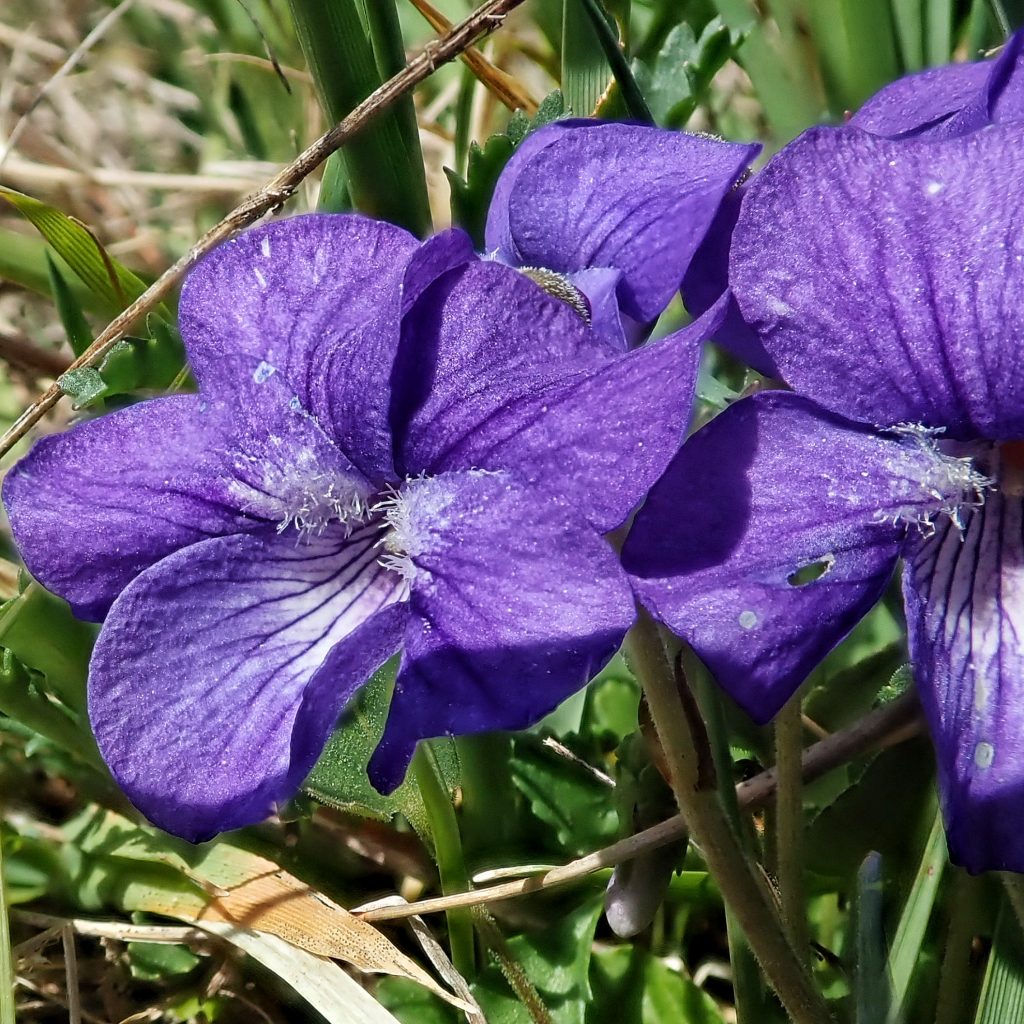
Again fabulous information Thanks!
Thanks for the appreciation!